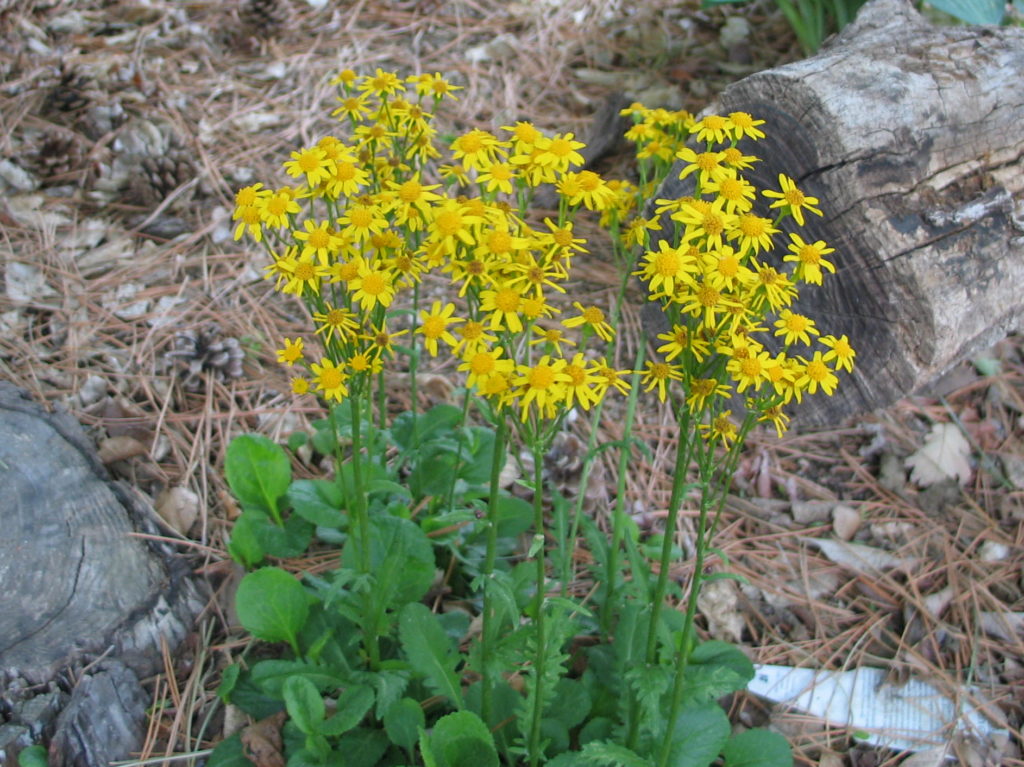Our FloraKansas Plant Sale is the largest native plant sale in the state of Kansas. We do our best to provide a wide selection of native and adaptable perennials that will grow reliably, but will, over time, use less water and fertilizer. Using native plants in your landscape helps to build back some of the native habitat that our cities and neighborhoods have paved over and shoved aside.
While planning out our inventory for this year, I was struck by how many amazing North American natives we offer that get overlooked. Why are these dazzlers not flying off the shelves? I’d like to introduce our readers to some of these lesser-known native showstoppers.
Linum p. Lewisii– Flax
Linum, also known as blue flax, prairie flax, or Lewisii flax (named for Meriwether Lewis) is one of the few “true blue” flowers out there. It has dainty blooms on stout stems and thin, grey green foliage. According to the USDA link, it is native from Kansas to California and Texas all the way to the far reaches of Northern Canada. Linum does not tolerate prolonged wetness; good drainage and a somewhat rocky environment suit it well. At the Arboretum, we have a very old blue flax specimen growing out from between a couple of limestone slabs in a rockwall. It blooms every spring like clockwork!
Ipomopsis aggregata– Scarlet Gilia (Biennial)
Beloved by hummingbirds, scarlet gilia is a dry-loving plant, native to the western half of North America. Just missing the western Kansas border, this plant makes its home in Colorado, Utah, New Mexico and California – you can tell from that list that it likes a high-and-dry soil climate with excellent drainage. Gilia will likely do well in a sunny rock garden.
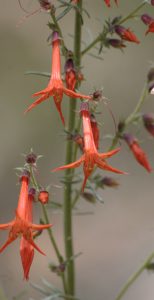
Scarlet Gilia has dainty red blooms but a tough, drought tolerant root system.
Photo by Jerry Friedman (Own work) [CC BY-SA 3.0 (https://creativecommons.org/licenses/by-sa/3.0) or GFDL (http://www.gnu.org/copyleft/fdl.html)], via Wikimedia Commons
Packera obovata– Golden Ragwort
Native from Kansas all the way to the Atlantic ocean, this woodland species is a colorful ground cover that spreads via seed or rhizome. It appreciates a shaded location, but is very low maintenance once established. Usually blooming mid-spring, it is a welcome sight for hungry pollinators!
Talinum calycinum– Rock Pink
Rock pink, also known as fameflower, is a sweet and petite succulent that loves hot sun. Native from Nebraska to Texas and Colorado to Missouri, this species loves rocky, gravelly soil and dry conditions. Brilliant purple flowers contrast with bright yellow stamens in the center. These look great next to low growing non-native companions such as hens and chicks, annual rose moss or ground-hugging sedums.
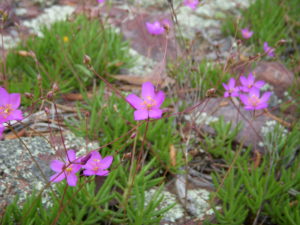
Talinum is a native succulent with wiry purple stems and bright blooms. Photo by Corey Raimond (Largeflower Fameflower) [CC BY 2.0 (http://creativecommons.org/licenses/by/2.0)], via Wikimedia Commons
Stylophorum diphyllum– Celandine Poppy
Found mostly east of Kansas in Missouri, Kentucky, Indiana and Michigan, celandine poppy is a cheery yellow spring bloomer that often goes dormant during the hot summer months. It has lobed leaves and hairy stems which support large, yellow, poppy-like flowers.
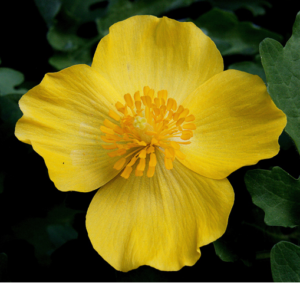
Celandine poppy gives bright yellow blooms early in the growing season. Photo by R.W. Smith, Lady Bird Johnson Wildflower Center
Carex brevior– Plains Oval Sedge
Okay, so this isn’t a blooming show stopper, but it is a must-have nonetheless! The weedy, invasive sedges give a bad name to the genus, but Carex brevior, and many other well-behaved sedges are superb for filling in gaps in the garden, creating a lush, verdant look. Deep green arching blades and a compact form make this sedge a hit in a part shade setting.
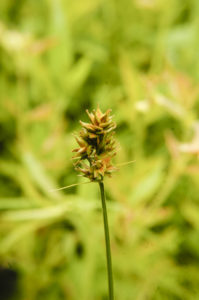
Lovely seed head of Carex brevior. Photo by Frank Mayfield [CC BY-SA 2.0 (https://creativecommons.org/licenses/by-sa/2.0)], via Wikimedia Commons
Berlandiera lyrata– Chocolate Flower
Chocolate flower is one of my personal favorite natives. It truly smells (and tastes?) like chocolate, a unique and tantalizing scent for your garden. Plant in large groups to maximize the visual impact and aroma. Also known as greeneyes or chocolate daisy, they are beneficial to pollinators and can grow in dry, shallow soil. They are native to Kansas, Oklahoma, Colorado and New Mexico.

Chocolate flower is irresistibly cheery and smells uncannily like warm chocolate. Photo by Kaldari (Own work) [CC0], via Wikimedia Commons
Spring is just around the corner – soon our greenhouse will be bursting with all these species and many more! Not sure how to incorporate these plants into your garden? Come to our Native Plant Landscaping Symposium to hear about the experiences and techniques of native plant gardening from beginners and veterans alike. I hope to see these beauties in more landscapes soon, for their own uniqueness and for their contribution to the ecosystem.


